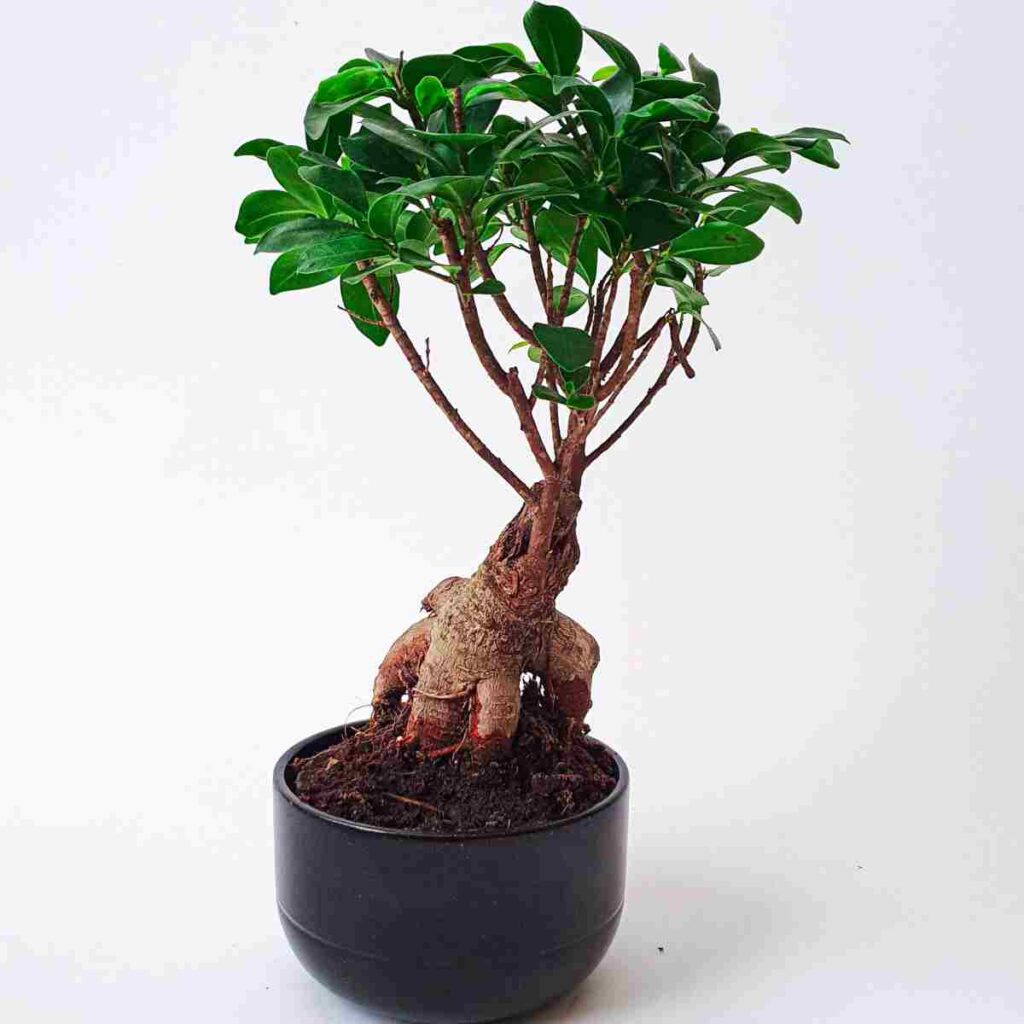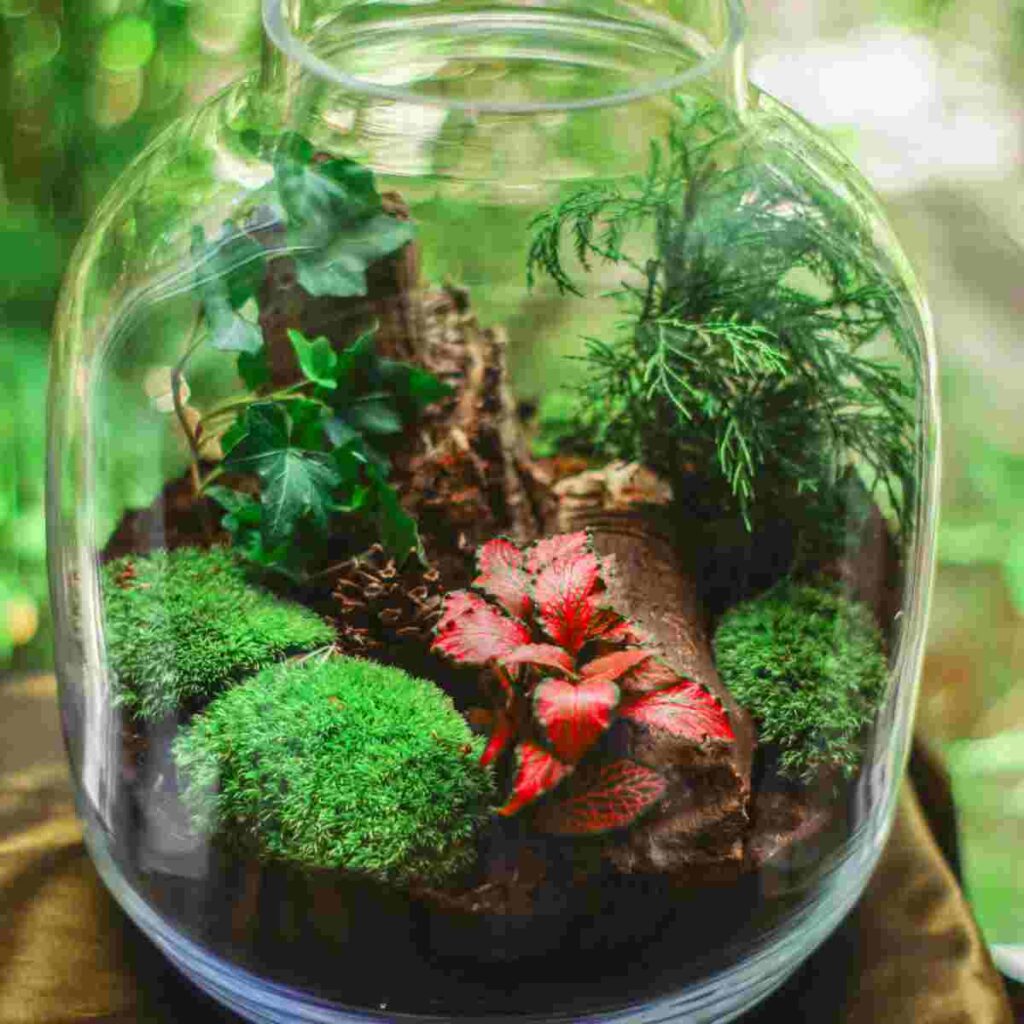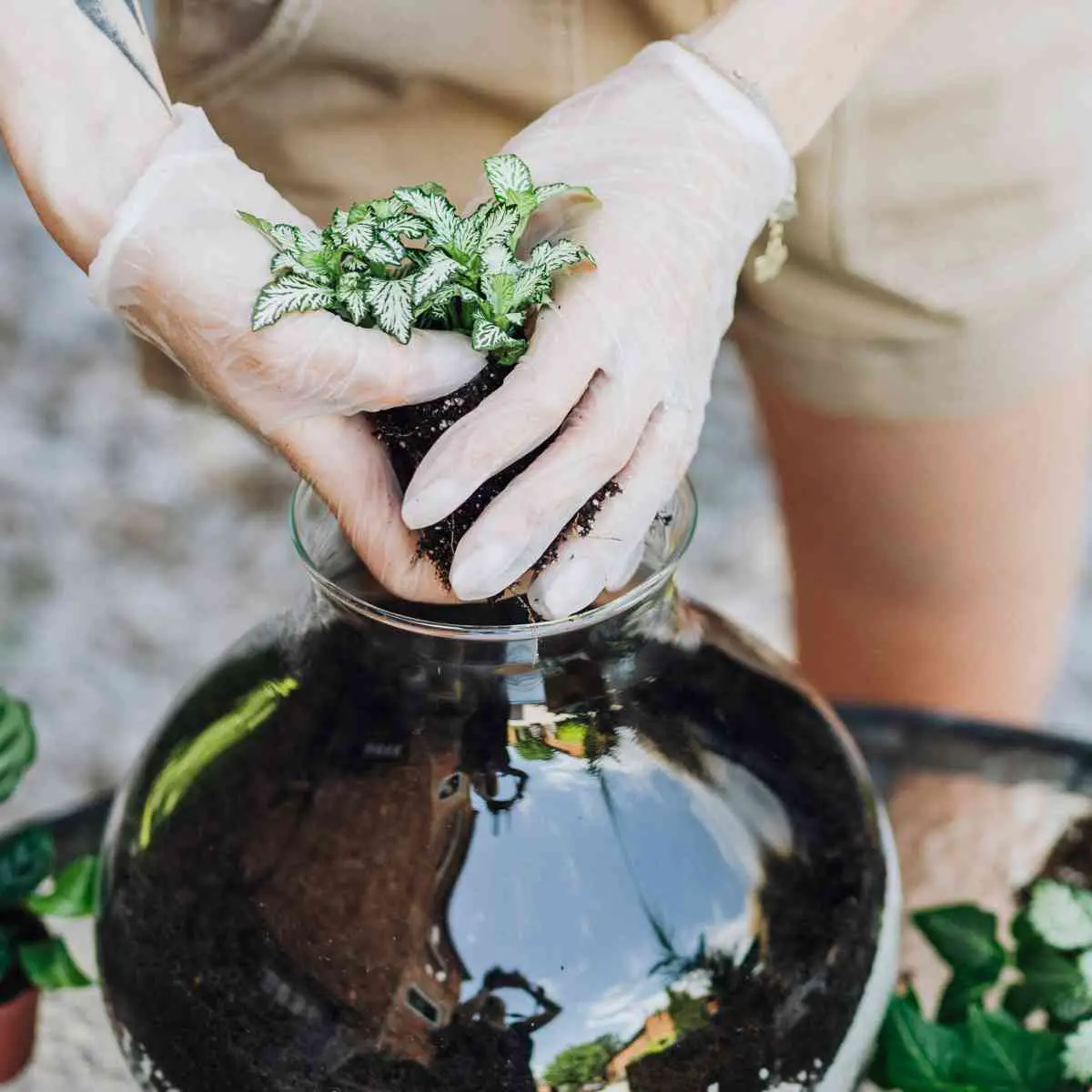A bonsai terrarium is a miniature world in which you can create your own scene using bonsai trees. When it comes to adding a bit of greenery to your home, it can be a unique and stylish option.
Though they may seem to be delicate, bonsai trees are ideal for a terrarium because of their intricate and beautiful features. But how do you choose the best bonsai trees for a terrarium?
Finding the right bonsai tree for your terrarium can be a difficult and confusing task. Bonsai come in hundreds of different varieties and knowing which one is right for you can be hard. Now, with our quick and easy bonsai terrarium guide, you can easily understand how to pick the best bonsai for a terrarium.
In this article, we will discuss what types of bonsai trees are the best for terrariums. We will also discuss some examples and beautiful terrarium bonsai tree ideas for you to bring into your home.
Can You Grow a Bonsai Tree in A Terrarium?
Many people want to know if they can grow a bonsai tree in a terrarium. For those who are interested, the answer is yes, you can grow bonsai in a terrarium.
However, it is important to ensure that you have the right tree species for growing in a terrarium. Not all tree varieties can withstand the unique growing conditions inside a terrarium.
Only trees with the proper size, moisture tolerance, and humidity tolerance are perfect for growing in a terrarium.
What Is a Bonsai Terrarium:
A bonsai terrarium is a special type of container used to grow and cultivate miniature trees. The word “terrarium” comes from the Latin word for earth, which aptly describes these small, earth-filled worlds.
By definition, a terrarium is a closed transparent container in which plants are grown. It is a type of small, enclosed ecosystem. It’s a self-contained environment where plants, animals, and people coexist.
Creating a miniature ecosystem inside a terrarium allows you to control the environment and create the perfect conditions for your plants to thrive.
Terrariums are great if you live in a small space or if you don’t have the time to take care of another plant. They’re easy to make and are also great gifts!
Some terrariums are as simple as a glass jar, while others are elaborate structures that imitate natural landscapes.
Investing in a terrarium kit is cheap and easy. You can choose from lots of different plants to see which works best for your space.
Types of terrariums:
Terrariums come in two styles: open and closed.
Open Bonsai Terrarium:
An Open Bonsai Terrarium is a type of terrarium that is designed to allow for better airflow and drainage than a traditional closed terrarium.
Open terrariums are especially ideal for those who don’t have time to care for a more delicate plant. Terrarium plants, like succulents and cacti, can withstand drying out but prefer a lot of air circulation and plenty of sunlight.
Open bonsai terrariums can be made from a variety of materials, including glass, plastic, or metal.
Closed Bonsai Terrarium:
Closed terrariums are ideal for plants like ferns, mosses, or South American plants that like high humidity and less air circulation. These terrariums have glass lids that trap water inside, increasing the humidity level of the terrarium.
What Do You Need to Get Started:
The first step in creating your terrarium is to gather all the necessary items. Below is a list of items you will need for this project:
A Clear Glass Vessel:
The vessel can be either a small jar or bowl, whichever you prefer. I used a large jar for my terrarium which was about 10″ tall and 8″ wide. A small bowl would work great for those who are just beginning to make these little worlds.
Small Rocks:
The rocks help with drainage and give your plants something to hold onto to prevent them from floating around in the soil.
Activated Charcoal Granules:
Activated charcoal is used as an air purifier, so it’s perfect for keeping unwanted smells out of your terrarium. It also keeps mold at bay!
Peat or Sphagnum Moss:
This acts as a natural filter and provides valuable moisture to your plants that live in dry environments or desert climates!
Potting Soil:
You’ll want to use soil that’s specifically made for bonsai trees or any other type of tropical plant that requires good drainage and aeration.
A Small Spade or Trowel:
A spade or trowel is used for planting succulents, moss, and decorative items into the glass container. This tool is also used for mixing the soil mixture.
A Mist Bottle:
It is used to keep the plants in the terrarium moist. You can purchase one at any garden supply store or simply use an empty water bottle.
Misting the plants several times a week will allow them to stay hydrated without being overwatered and causing root rot.
Bonsai Tree:
You must have at least one bonsai tree in order to make a bonsai terrarium. There are many varieties of trees available, so choose one that best fits your preferences and needs.
If this seems too complicated to you, you can also use a bonsai terrarium kit like this to reduce the hassle.
Benefits of Growing Bonsai in a Terrarium
Growing Bonsai trees in a terrarium have a lot of benefits. For instance,
- You will not have to water your bonsai trees continually because the terrarium acts as an incubator.
- You can also opt to use grow lights such as quantum or board lights when growing your bonsai.
- As the environment is highly humid inside a terrarium, you can grow plants that are difficult to grow in dry air.
- And finally, you can grow a miniature garden in very little space.
Tree Species for Terrariums:
Here we have a selection of different types of bonsai trees, some of which are well suited to terrariums.
The Best Bonsai Trees for Terrariums:
When it comes to finding the best bonsai trees for a terrarium, there are a few things you need to take into consideration. The type of tree you choose will largely depend on the size and layout of your terrarium.
If you have a small terrarium, then a dwarf bonsai tree would be a good option. If you have a large terrarium, then you could go with a larger bonsai tree.
Here are some of the most popular bonsai terrariums trees that you can try:

Bald Cypress:
Bald cypress is a very popular bonsai tree, especially for terrariums. It can tolerate being in lower light. Bald cypress is also extremely tolerant of salt air and coastal winds. So it is an ideal choice if you live by the ocean or somewhere that is susceptible to frequent storms.
Because the trunk of a bald cypress grows in a conical shape, its bonsai looks very interesting.
How to grow Italian Cypress bonsai
Bougainvillea:
Bougainvillea bonsai trees for terrariums are one of the most beautiful decorations you can place at home. With their exotic appearance, they are highly popular among those interested in interior design, especially those with green fingers and who love gardening.
Brazilian Rain Tree:
The Brazilian Rain bonsai Tree for terrariums is perfect for you as it can thrive both indoors and outdoors. It is one of the most beautiful tropical plants in the world.
Ficus:
The ficus is the most popular choice for bonsai trees for terrariums. These are tropical plants native to Southeast Asia and have been used in bonsai culture for a long time. They make a great gift for people who have a green thumb but just not the room to grow one.
Fukien Tea:
Fukien bonsai trees are some of the most delicate bonsai species. They are also interesting plants and nice additions to the terrariums.
Water Jasmine:
Water jasmine bonsai trees are a unique tropical plant that is often used in indoor terrariums. Because, it’s beautiful and versatile foliage, fragrant flowers, and ability to thrive under low-light situations.
Things to Consider When Choosing the Perfect Bonsai Tree for Your Terrarium:
Bonsai trees in glass jars are becoming more popular because they add a touch of elegance to any room. But there are certain considerations to think about before buying a bonsai tree for your terrarium.
Tree Height, Shape, and Color:
The size of the bonsai tree you choose for your terrarium is a very important consideration.
Bonsai trees come in different sizes. Some of them can grow big and tall, but for a terrarium, you need small bonsai trees – about 4 to 5 inches. These are perfect for a small, self-contained terrarium.
The Best Containers to Be Used As a Terrarium
Glass is the most common choice for terrariums. But those who are on a budget or prefer something a little different can consider some other types of containers.
Just because it’s a terrarium doesn’t mean you have to put it in a glass container. Coffee pots can work, as can goldfish bowls or fish tanks with a light bulb over them.
Care for Bonsai Trees in Terrarium:

Transplanting:
Many bonsai trees will show signs of transplant shock after being placed in a terrarium. These may occur within the first week or so. This is normal behavior due to the change in environment. Just remove any damaged or yellowing leaves, so new growth can start.
Water:
Don’t wait for your terrarium soil to dry out completely before applying water. Use a mister or hand-held spray bottle to saturate the top layer of soil every day.
Light:
Bonsai trees in terrariums thrive indoors and with enough sunlight, usually from one or two windows. If you don’t have enough natural light, invest in a grow light and keep it on for at least five hours per day. Don’t move the terrarium too much, or it will disturb the ecosystem.
Temperature:
Like most plants, bonsai trees should be protected from extreme temperatures. Don’t let your bonsai tree get cold or overheated. During the winter, you may need to wrap your terrarium to keep it warm.
Soil:
One of my favorite bonsai soil mixes is akadama soil. It’s essentially baked clay that has great drainage, and water retention, and it doesn’t compact over time as other substrates might.
Fertilizer:
To care for bonsai trees in a terrarium, you will need to apply bacterial fertilizer. The bacteria will help the ecosystem thrive and keep your tree nourished. Spray on a foliar fertilizer to add nutrients directly to your tree’s leaves.
Pest and Diseases:
Pests and diseases are extremely rare in the terrarium environment. However, since this environment is so unnatural for these plants, you may encounter problems with spider mites and mealybugs.
Due to high humidity sometimes mold develops on your terrarium, but don’t worry it can be easily treated. To remove the mold from the soil’s surface, use a butter knife or any other tool. Then dry the area, and spray a solution of water and hydrogen peroxide.
Conclusion:
Bonsai terrariums can make a great addition to any home. They are easy to care for and can provide years of enjoyment.
When choosing the best bonsai tree for a terrarium, it is important to consider the size and shape of the tree, the type of soil it needs, and the amount of light and water it needs. Bonsai trees are delicate and expensive, so choose your plants carefully.
Now armed with the information I have shared here, you will be in a better position to select the best bonsai trees for terrariums.
I hope this post was helpful to you. If you like this post, please share it with others too.
